(439) Black nightshade [英作文]
(439) Black nightshade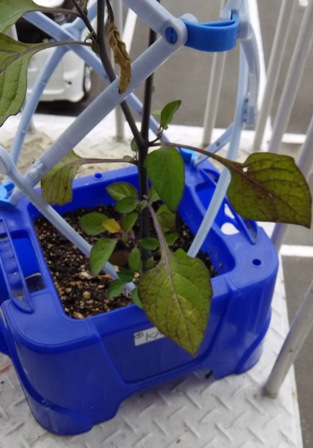 Pic. weed in his flower pot
Pic. weed in his flower pot
Every weed has its name. I’d like to talk about how to know the name of weeds. The other day a Kenyan mother, my friend, quickly searched for the name of a weed in her son’s flower pot by her smart phone. I was impressed by her searching speed and curiosity. A few weeks later I saw a
peculiar weed and took a picture of this plant. The picture’s property says it was on Sep. 19. I tried to find its name on the Internet like my Kenyan friend. I wanted to know how soon I could get to the exact picture. 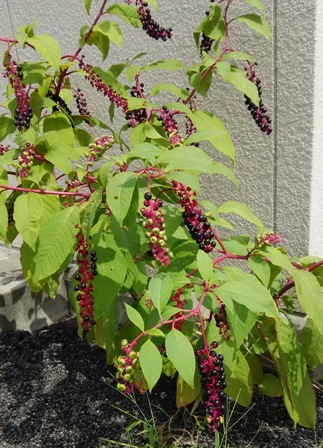 Pic. unknown weed
Pic. unknown weed
I typed two key words into a search engine, Google. One is Budo, “grape”, because its fruit looked like a tiny grape. Another is Yama “wild”, because I thought it looked like a weed growing in the field. I instantly found several exactly the same kind of plants as this weed among pictures of Yama-budo (Crimson Glory Vine). 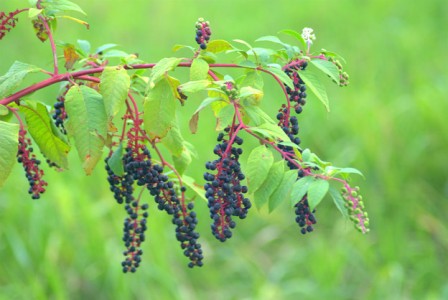 Pic. Yama-budo?
Pic. Yama-budo?
This was unexpected result to me. I thought it would take me much more time to reach the picture of this plant. Google is really great. But there remained a little problem. Someone said its name was “Yamabudo” but others said no. 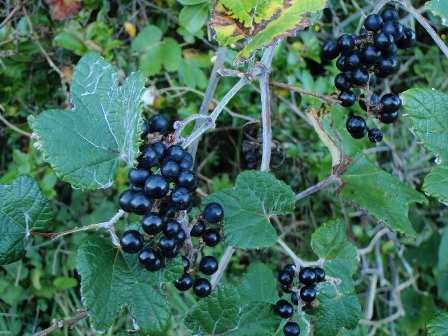 Pic. Yama-budo vine
Pic. Yama-budo vine
Which is correct? On the next day, finally I reached its right name, Youshu-Yama-gobo. Its binominal name is Phytolacca americana. It has several names in English, such as American pokeweed, ink-berry and pokeberry. I got confident about searching of wild plant’s name by this result.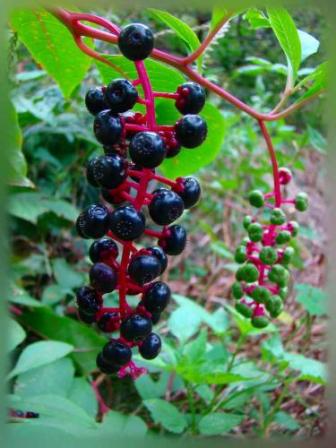 Pic. Youshu-yama-gobo
Pic. Youshu-yama-gobo
Next I’d like to show you the first weed, which had grown in a student’s flower pot of housenka (Jewelweed or touch-me-not). 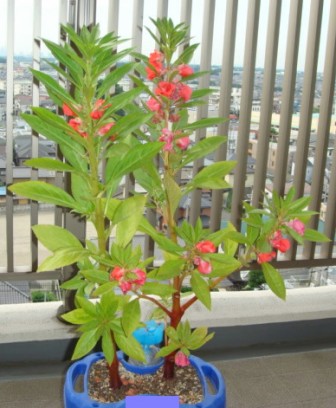 Pic. housenka
Pic. housenka
He told me that his Housenka was different from his friends’. He proudly showed me his housenka. He had brought back home from school during summer vacation. I was really astonished at his housenka. He was wrong. His housenka was just a weed, which already had its berries. 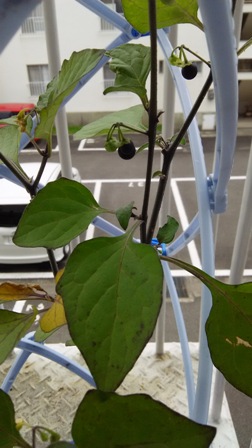 Pic. His housenka
Pic. His housenka
His mother and I started to talk about this plant. I told that its leaves had purple lines on them. I thought its leaves were similar to egg plants’. She told that its berries reminded her of African berries. She began to search for the name of this weed. She showed me pictures of similar berries by smart phone several times. Then she reached the goal. It was a black nightshade. I was very
surprised at her curiosity to the weed. She kindly found its Japanese translation for me. 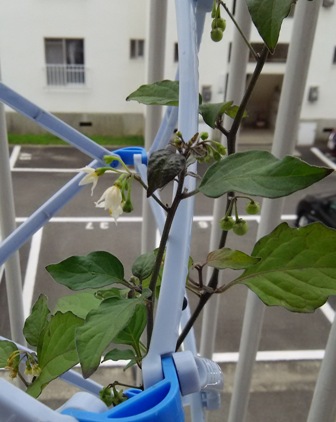 Pic. Inu-hoozuki
Pic. Inu-hoozuki
Inu-hoozuki is its Japanese name. Its means useless Hoozuki (Chinese lantern plant). Inu-hoozuki has two opposite flower languages. One is a liar, the other is truth. Hoozuki is not toxic but
inu-hoozuki is toxic. In this sense inu-hoozuki is a liar. Hoozuki’s fruits look big and beautiful but its inside is empty. 
 Pic. Hoozuki
Pic. Hoozuki
Real fruit is a tiny seed covered with skin. So Chinese lantern plant’s flower language is deception. Inu-hoozuki fruit doesn’t have colorful covering. Additionally, though it is considered a toxic weed, plant parts are used as a traditional medicine. In this sense black nightshade deserve to mean truth in the language of flower.
*




コメント 0